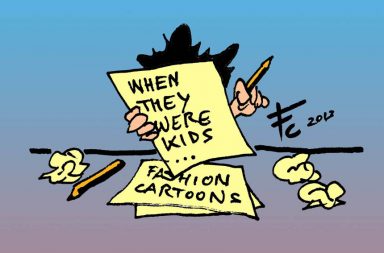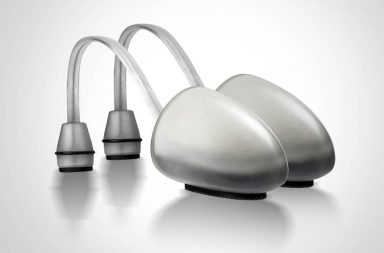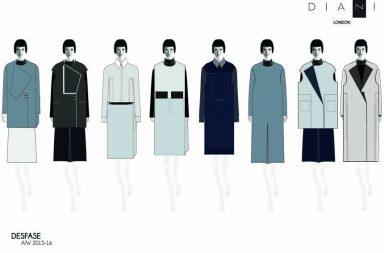In the Conde Duque neighborhood of Madrid, there’s a magical place, a workshop / store where Remedios Vincent creates odd and different pieces that are, “made to dislike”: her workshop for FEEAS.

Remedios Vincent
Remedios Vincent was born in Extremadura and has lived in Madrid for quite awhile now. She studied Fine Art at the Complutense University but, after working in the advertising industry for a number of years, she was “tired of putting my creativity in the hands of the enemy” and decided to radically change her life. She dedicated herself to her passion, arte, studying any kind of contemporary art she could get her hands on and creating her own work.
Remedios is a specialist in urban art and has been working for years in public spaces “trying to improve them with the help of artists and other creatives” from the Madrid city hall arts council. That’s where she works “in the morning”; in the afternoons she spends her time with “feeas”.
The Taller de FEEAS: Made to dislike (a play on words, taller de feas with one ‘e’ would mean workshop of ugly in English) is a place where Remedios creates strange artistic pieces (necklaces, rings, brooches, and other things). And what’s so special about them? Are they beautiful to look at? Wearable? Her answer is a bit more complex than that. They’re made from objects that Remedios finds in antique shops, mainly old medical instruments. So dentures, glass eyes, thermometers and old syringes become the leitmotif of her artistic accessories. Some of them are more than 100 years old.
Her blogs, on tumblr “Infamous Accessories” and “Flores en el Ático”, are a delightful cornucopia of oddities.
See for yourself if these pieces are indeed “made to dislike”.

SO CATCHY!: Remedios, Why use a name as unsettling as “Taller de FEEAS: Made to dislike”?
REMEDIOS VINCENT: I’d been making pieces for 4 years that, in the beginning, were for myself. I started with small porcelain pieces and then I started working with all kinds of antiques, most of all with tools and medical material.
I opened a shop / workshop in October and a part from selling and showing my pieces, I create them there. My pieces are named after the initials of my blog, Flores En El Ático (Flowers In The Attic), in plural…
SC!: When and how did you get started?
RV: I was having breakfast one day with my brother in one of our favorite squares near my house, and we saw a shop that we liked was for rent. From that point on, we didn’t stop until they rented us the space and from that moment until we opened the store / workshop was a few months.
SC!: You say on your website that you can find us in the shop in the afternoon (not too early) until late …
RV: I work as a civil servant in the mornings and I can’t arrive to the shop until around 6 in the afternoon, so I try to make up for it by staying open until at least 10 PM.

SC!: How do you come up with the pieces? Are there things that especially catch your eye?
RV: I’m very drawn to all types of antique tools. They’ve got extraordinary quality and they have a beauty to them that you don’t often find in objects that we use for work. I’m really into the prostheses and measuring equipment, small machinery and anything else that, taken out of context, I can use creatively.
SC!: Your pieces are surprising and disconcerting, where do you find the inspiration?
RV: I spend every day looking at art because of my work in public interventions for my blogs, which demand I stay up to the moment: Flores en el Ático, and its tumblr, which are up-to-date references of interest about new artistic manifestations, and my Tumblr, Infamous Accessories, where I capture references from artists and designers that work with the human body as a material and to create.
Also there are magazines, mostly online, I follow the RSS of more than 500 publications of all types that I go through almost every day.
As for films, you could say that Svansmayer is my favorite filmmaker, his characters have inspired me, above all when I work with antique porcelain.
SC!: What feeling do your pieces provoke?
RV: At first, a strangeness, then surprise, then wonder, sometimes rejection and a certain fascination so you can’t take your eyes off of them. But you can never say that they are completely likeable.
SC!: What kind of people like or buy your pieces?
RV: Surprisingly, older people especially since it reminds them of things that happened in their past, of course, it’s usually young people who dare to put them on.

SC!: Do you wear your work?
RV: Of course I do, there isn’t a single one that I haven’t used, I have to make sure that they work since they’re incredibly fragile and some are even dangerous.
SC!: Have you though about online sales?
RV: Yes, but I haven’t really gotten into it yet, I don’t have enough time for much more. But, if anyone is interested they can email me and I’ll give them prices and organize shipping.
SC!: What’s the average price of one of your pieces?
RV: From 150 to 200 euros although the eye rings are a bit more expensive since ocular prostheses are usually handmade by real artists and are more expensive. The glass pieces are real works of art even before I touch them.
SC! What are the ‘flowers in the attic?
RV: It’s my recreation space, where I accumulate thousands of artists and pieces that, for one reason or another have caught my attention. I keep them there to use at anytime and so others can use them. I know that many schools and universities, and some professionals, visit the blog to find things that you can’t usually find in magazines or in books on contemporary art.
SC!: We’re witnessing a small revolution in the world of accessories. Can you make any predictions about what we’re going to see in the next few years?
RV: New technologies applied to accessories that, at the same time as they decorate the human body, will help to improve the life of the wearer.
SC!: The oldest or most important piece that you’ve worked with…
RV: The ocular prostheses are the pieces that I like best since they were actually used to improve the life of those who wore them. They’re made to size for people who’d lost eyes and in their day were a beautiful accessory.
SC!: Any favorite jewelry designers?
RV: More than just jewelry designers, which isn’t something that really interests me, I feel pulled towards artists who work with the body as architects, sculpting parts to make them more useful.
Photos in article by: Gosia Janik y Fernando Ocaña
Translated by Michael Padilla




